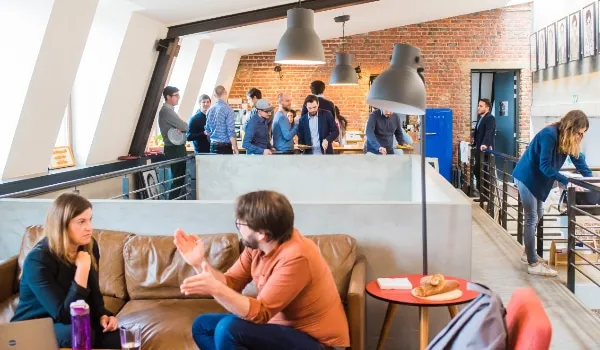How long can you focus on your workplace?
Over the past twenty years, our attention span has fallen by more than 30%. On average, it's only 47 seconds (!). Most people probably won't even finish reading this article.

Two-thirds of employees have trouble concentrating
A decade ago, a background conversation was seen as the biggest distraction in the office, but today, open office spaces and virtual meetings are only adding to the problem. From loud voices and penetrating ringtones to smart watches — everything is fighting for our attention. From global research by Steel case it appears that two thirds of employees have difficulty concentrating due to noise pollution at work. Even working from home does not guarantee focus. Kids, pets, and household chores keep distracting.
The hidden costs of multitasking: Our difficulty staying focused has a negative impact on both our work performance and our health. Gloria Mark, Ph.D., has been investigating our increasingly shorter attention spans for years. Her research shows that constantly changing tasks causes stress. People who wore heart rate monitors had blood pressure rises as soon as they were multitasking. In addition, several studies show that multitasking leads to errors and poorer performance. This is due to the so-called “switch cost”: each time you switch tasks, it takes extra time to get oriented again and get on with what you did.
Deep work: focused work on complex tasks
Not all attention is the same. Deep work, or fully concentrated work on complex tasks, requires a high level of focus. According to Cal Newport, author of Deep Work, this is a valuable skill to develop, as it not only improves performance, but also provides a sense of flow and satisfaction. However, deep work requires practice and a distraction-free work environment.

Organizing attention: focus through design
Stimulating focus requires a holistic approach. For example, some organizations implement quiet hours or meeting-free days. Technology, such as AI, can support by automatically blocking time in calendars or muting notifications. A popular technique is the Pomodoro method: work in a concentrated way for 25 minutes, then take a short break of five minutes.
🍅 The word “Pomodoro” means “tomato” in Italian. The name of the Pomodoro method is derived from the tomato-shaped kitchen timer used by Francesco Cirillo, the inventor of this technique, when he developed this method in the 1980s. Cirillo used the timer to measure 25-minute blocks of time during which he focused on one task followed by a short break. This simple technique later became a popular strategy for time management and productivity.
The work environment plays a crucial role in auditory stimuli
Our work environment plays a crucial role in how we deal with visual and auditory stimuli. This includes partitions, physical barriers or plants, which reduce visual distractions and create a sense of privacy. When people have control over their own space, they feel safer and are better able to concentrate.
It's' natural 'to feel threatened when someone stands behind you unnoticed when you're at work. Noise is an important factor in this regard. Total silence isn't always the answer. Too much silence can be uncomfortable and draw the energy out of a space. A bit of reverb can actually create a lively atmosphere without being annoying.

Optimise acoustics; depending on the use of the space
Every room needs unique acoustic properties, depending on usage. Think carefully about who is using the space and how you want them to feel. Here are some practical considerations:
- Partitions: provide soundproofing elements in areas where people work in a concentrated way, such as mobile partitions, room dividers whether acoustic panels.
- Materials: use sound-absorbing materials or acoustic panels on walls, ceilings and furniture.
- Location: take into account what's happening in the area. Don't place social spaces next to quiet workplaces.
- Soundscapes: add natural sounds add, such as relaxing background music or bird sounds. This can mask distractions and contribute to concentration and comfort.
- Room for preferences: create zones with different levels of stimulation, from quiet areas for deep work to vibrant spaces for collaboration.

A work environment designed for focus and concentration not only helps people to be more productive, but also to feel more relaxed and comfortable. By paying attention to acoustics, visual distractions and the layout of spaces, you can create an environment where everyone can perform optimally — in the office and at home. Want to know more? Take contact meet our specialists.
Share this:
Transform your environment into the best version to work, learn or live in
Know what options are available for your situation in 30 minutes.






